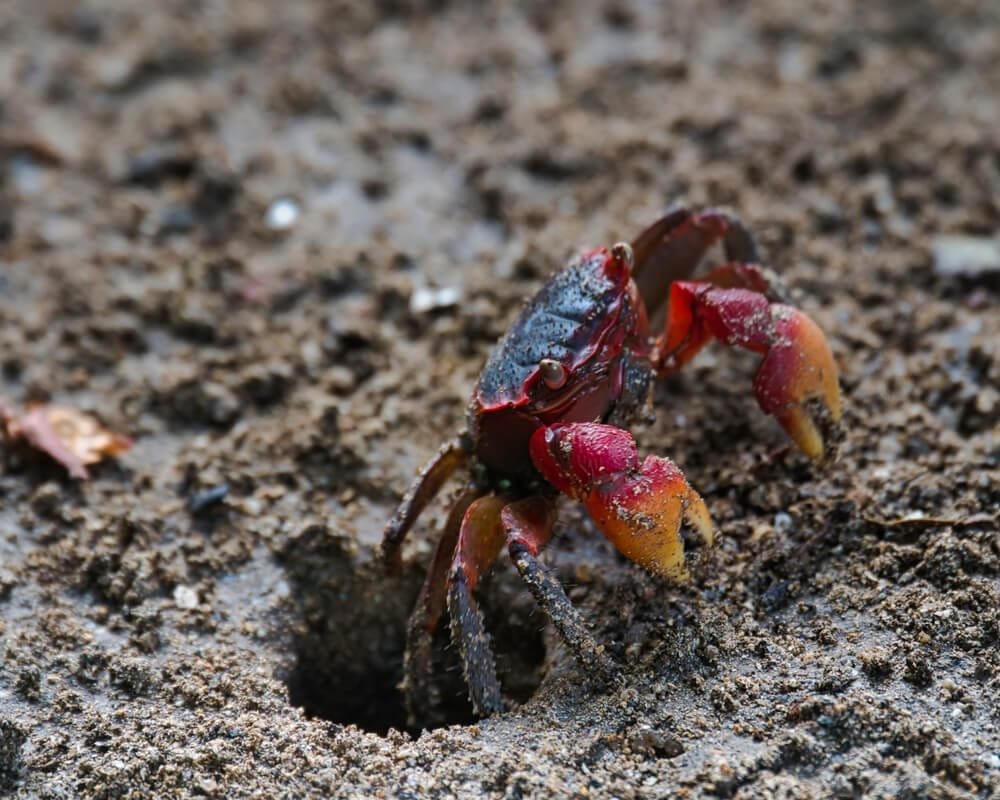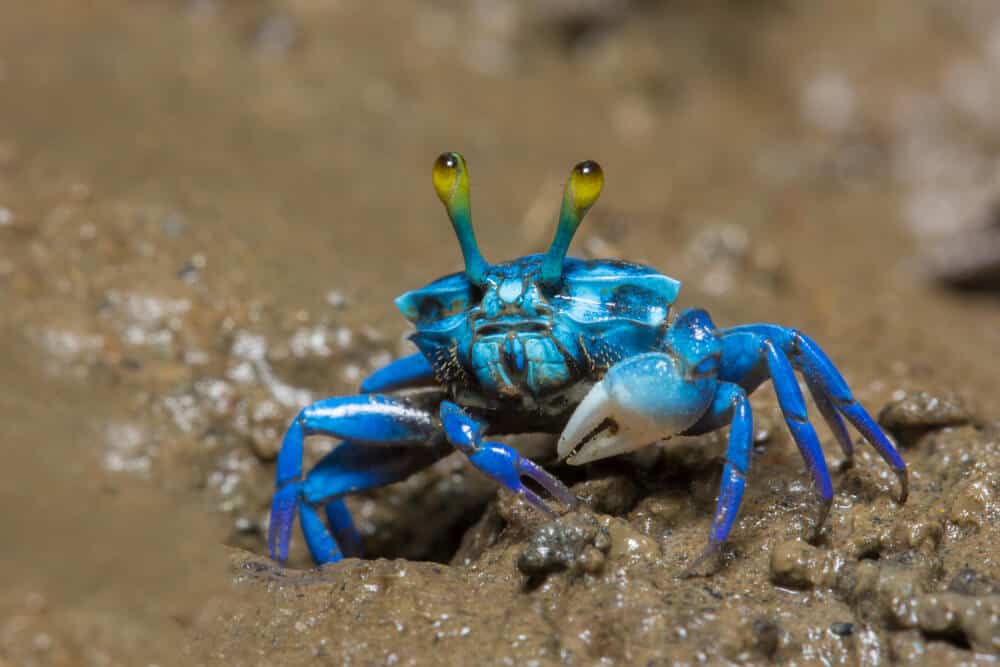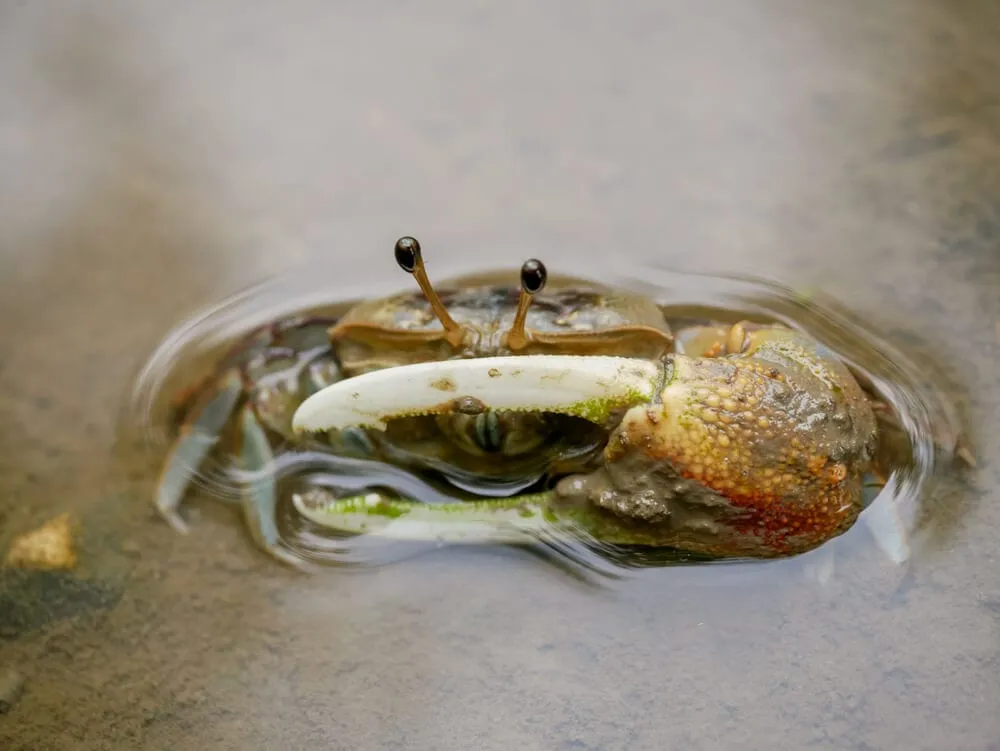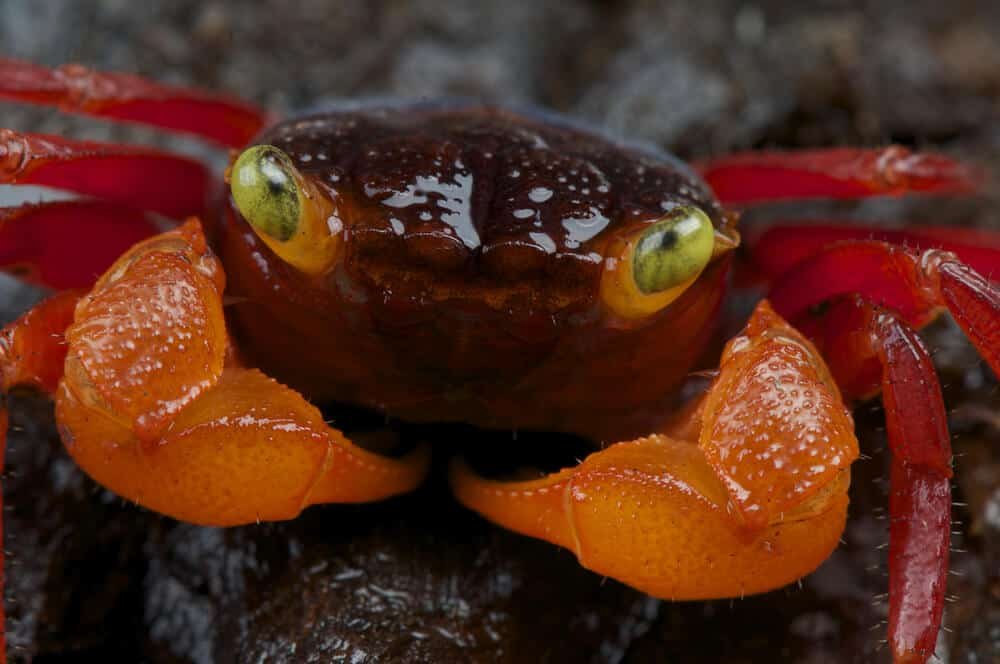Red Devil Crab: Discover Care Tips, Habitat and Fascinating Facts
Imagine stumbling upon a creature that looks straight out of your wildest nightmares – the Red Devil Crab. This fascinating crustacean, native to the mangroves of the Indo-Pacific region, boasts vibrant red-orange coloration with fearsome claws and beady eyes. With its aggressive nature and impressive defensive mechanisms, the Red Devil Crab has earned its devilish name. In this article, you will embark on a journey to uncover the intriguing characteristics and behaviors of this captivating creature. Get ready to be amazed by the world of the Red Devil Crab!
Physical Description
The Red Devil Crab is a small crustacean that measures approximately 2 to 4 inches in width, making it the perfect size for a captivating addition to your aquarium. It is known for its vibrant red color, which gives it its distinctive name. The shell of the Red Devil Crab is hard and robust, providing the necessary protection from predators. Its unique shape resembles that of a small crab, with sharp pincers and multiple legs that aid in both locomotion and capturing prey.
Habitat
The Red Devil Crab is native to the mangroves and estuaries of South America, specifically in regions such as Venezuela and Guyana. These crabs are primarily found in brackish waters, which are a mix of freshwater and saltwater. They thrive in environments with moderately warm temperatures and high humidity. Mangrove forests offer the perfect habitat for the Red Devil Crab because of the abundant food supply and shelter provided by the dense vegetation.
Behavior
Feeding Habits: Red Devil Crabs are omnivorous creatures, meaning they consume both plant matter and small animals. Their diet typically consists of algae, detritus, small insects, and even carrion. They have adapted to scavenge for food, using their sharp pincers to break open shells and capture their prey. These crabs also engage in filter feeding, where they sift through the water column for microscopic organisms.
Social Structure: Red Devil Crabs are known to be independent and solitary creatures. They prefer to live alone, but can tolerate the presence of other crabs in their vicinity. In captivity, it is advised to keep them individually or in pairs to avoid any territorial disputes. However, during mating season, males may engage in combat to establish dominance and gain the attention of a potential mate.
Defense Mechanisms: When threatened, the Red Devil Crab displays an impressive defense mechanism. They can arch their body and extend their sharp pincers, making themselves appear larger and more intimidating. Additionally, they have the ability to regenerate their limbs if they are damaged or lost, allowing them to escape potential predators.
Reproduction
Mate Selection: During the mating season, male Red Devil Crabs exhibit an elaborate courtship display to attract females. They perform a series of rhythmic moves, waving their pincers, and dancing around the female. If the male’s display is successful, the female will show her receptiveness by standing still and allowing the male to grasp onto her back with his specialized legs.
Breeding Process: Once the male has successfully attached himself to the female’s back, he transfers sperm into a specialized cavity called the seminal receptacle. The female carries the fertilized eggs on her abdomen until they hatch, which can take several weeks. During this period, the female creates a protective membrane to shield the eggs from harm.
Egg Development: The eggs of the Red Devil Crab are small and round, and their color ranges from light green to brown. The female carries the eggs until they have developed into fully formed larvae. Once the embryos have reached a certain stage, they will hatch into larvae and be released into the water, where they undergo a metamorphosis process to transition into small crabs.
Lifecycle
Hatching: After the eggs have hatched, the larvae are swept away by the currents and are at the mercy of the surrounding environment. They rely on floating debris and plant matter for shelter and sustenance during this vulnerable stage. Only a small percentage of the larvae survive to reach the juvenile stage.
Juvenile Stage: As the Red Devil Crab larvae grow, they molt several times, shedding their exoskeleton as they increase in size. They gradually evolve into miniature versions of the adult crabs. During this stage, they develop a heightened sense of independence and begin searching for their own territory in shallow waters.
Adult Stage: Once the Red Devil Crab reaches adulthood, it becomes fully capable of reproducing and sustaining itself. This stage is characterized by the crab’s vibrant red coloration and its complete development of pincers and walking legs. Adult Red Devil Crabs continue to molt periodically throughout their lives, allowing for growth and regeneration of lost limbs.
Ecological Impact
Invasive Species: Red Devil Crabs have been introduced to various regions outside their natural range, primarily through the aquarium trade. In certain cases, they have become an invasive species, outcompeting native species for resources and disrupting the balance of local ecosystems. Their feeding habits and ability to tolerate a range of water conditions make them formidable competitors.
Competition with Native Species: As an invasive species, Red Devil Crabs have been observed to compete with native species for food and habitat. They can disrupt the balance of local ecosystems, causing a decline in populations of other organisms. This competition may have negative consequences for the overall biodiversity and stability of the ecosystem.
Human Interaction
Pet Trade: The Red Devil Crab has gained popularity as a pet in the aquarium trade due to its vibrant color and unique appearance. They are relatively easy to care for, requiring a brackish water setup with ample hiding spots and a varied diet. However, potential owners should be cautious of their potential impact if they escape or are released into the wild.
Conservation Efforts: In response to the potential ecological impact of invasive Red Devil Crabs, conservation organizations have taken measures to prevent their spread. These efforts include public education campaigns to discourage the release of pet crabs into the wild, as well as regulations on the importation and trade of these species.
Research and Studies
Scientific Observations: Researchers have conducted numerous studies on the behavior, ecology, and impact of Red Devil Crabs. These studies have provided valuable insights into their feeding habits, reproductive biology, and ecological interactions. Scientists continue to monitor their spread and conduct further research to better understand and mitigate their impact on native ecosystems.
Impact of Climate Change: Climate change poses a significant threat to the habitats and survival of many species, including the Red Devil Crab. Rising sea levels, ocean acidification, and increased temperature can alter the conditions in their natural range. These environmental changes could potentially affect their reproductive success, feeding behavior, and overall population dynamics.
Economic Importance
Aquaculture: The Red Devil Crab has been explored as a potential species for aquaculture due to its ability to adapt to brackish water conditions and its fast growth rate. Cultivating Red Devil Crabs in controlled environments could provide a sustainable source of seafood and reduce pressure on wild populations. However, further research is needed to develop the necessary techniques and protocols for successful aquaculture.
Commercial Harvesting: In some regions, the Red Devil Crab is commercially harvested for their meat or used in the production of animal feeds and fertilizers. The economic value of these crabs has led to increased interest in developing sustainable harvesting practices to ensure their long-term survival and minimize negative environmental impacts.
Conclusion
The Red Devil Crab is a captivating creature known for its vibrant red color, unique shape, and intriguing behavior. Native to the mangroves and estuaries of South America, it thrives in brackish water habitats. Their feeding habits, reproductive biology, and potential as an invasive species have sparked scientific research and conservation efforts. The pet trade and the economic value of Red Devil Crabs have also prompted interest in their aquaculture and commercial harvesting. However, it is essential to balance the enjoyment and economic benefits derived from these crabs with their potential ecological impact.
Future Research Directions: Moving forward, further research is needed to understand the potential impact of Red Devil Crabs on native ecosystems and develop effective strategies for their management. Continued scientific observations and studies will provide insights into their behavior, reproductive biology, and response to environmental changes, such as climate change. Additionally, efforts to promote responsible pet ownership and sustainable economic uses of Red Devil Crabs can contribute to their long-term conservation and sustainability.



